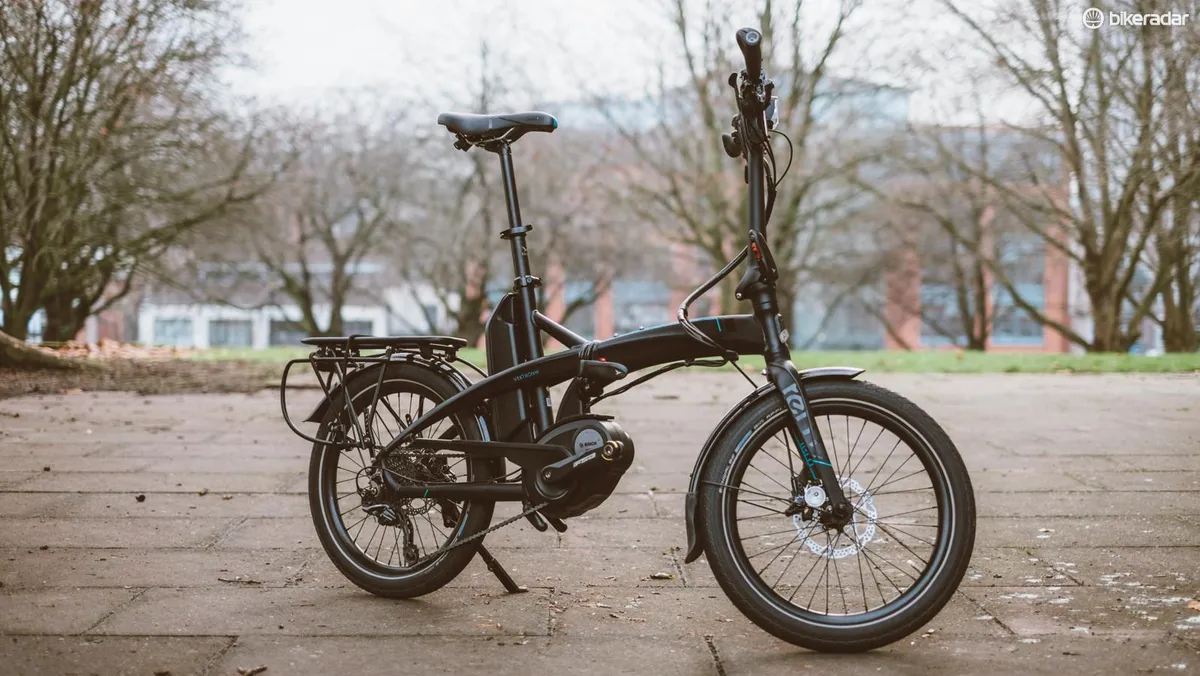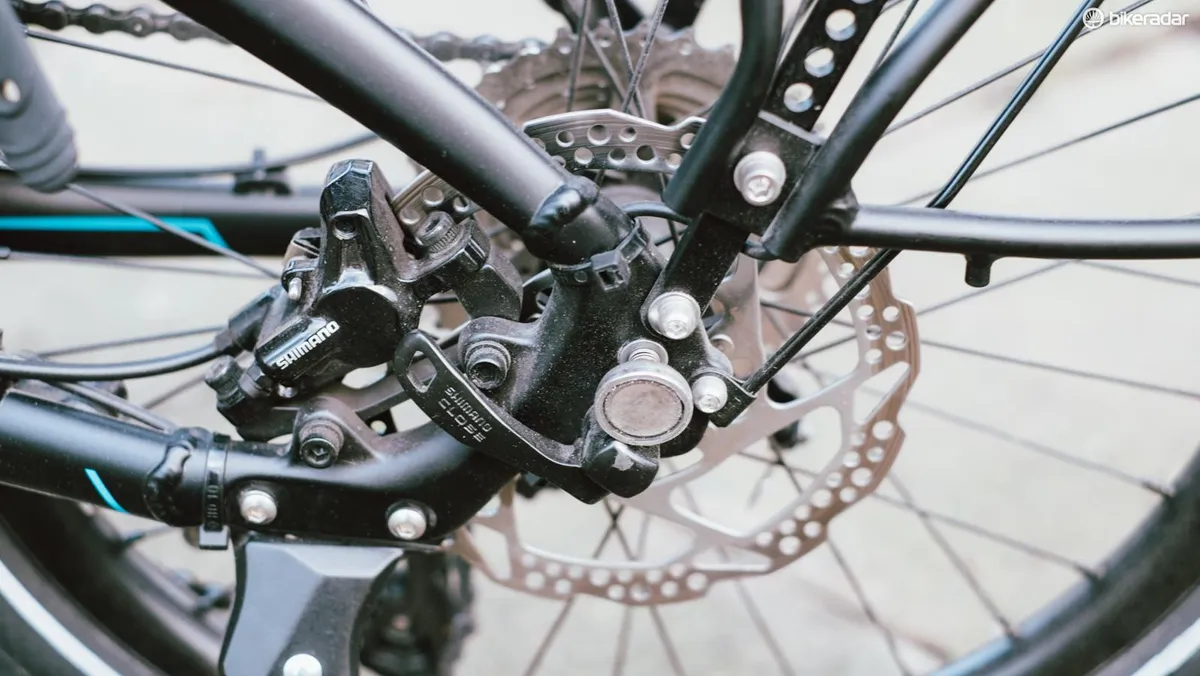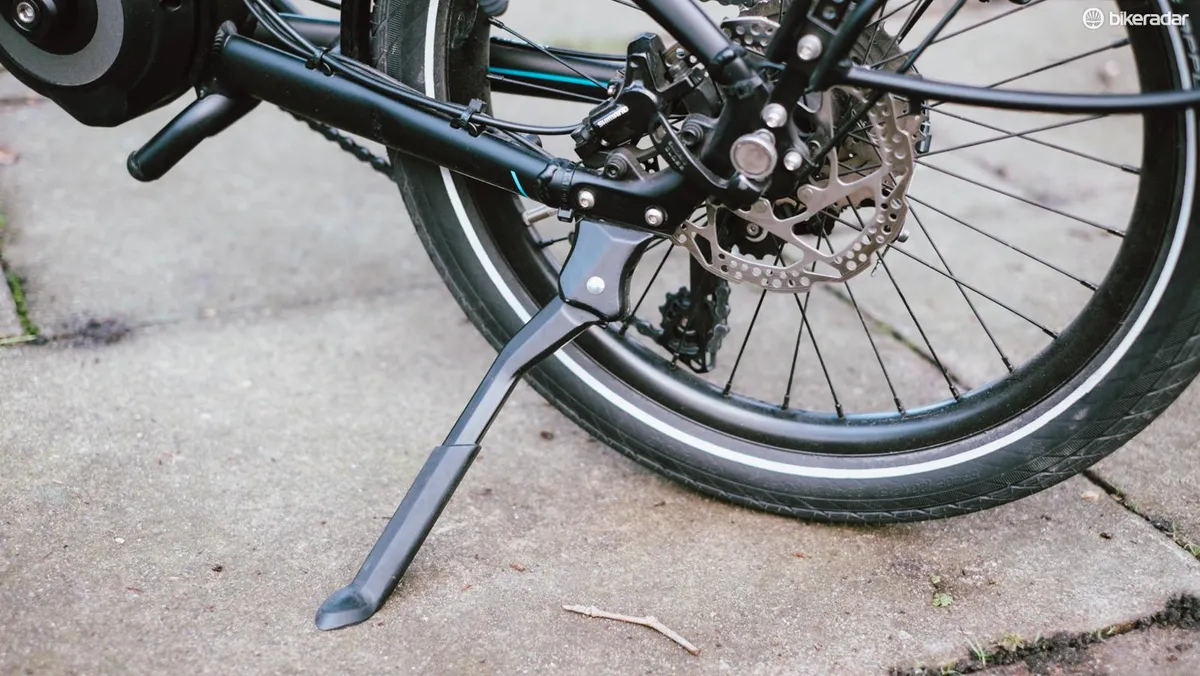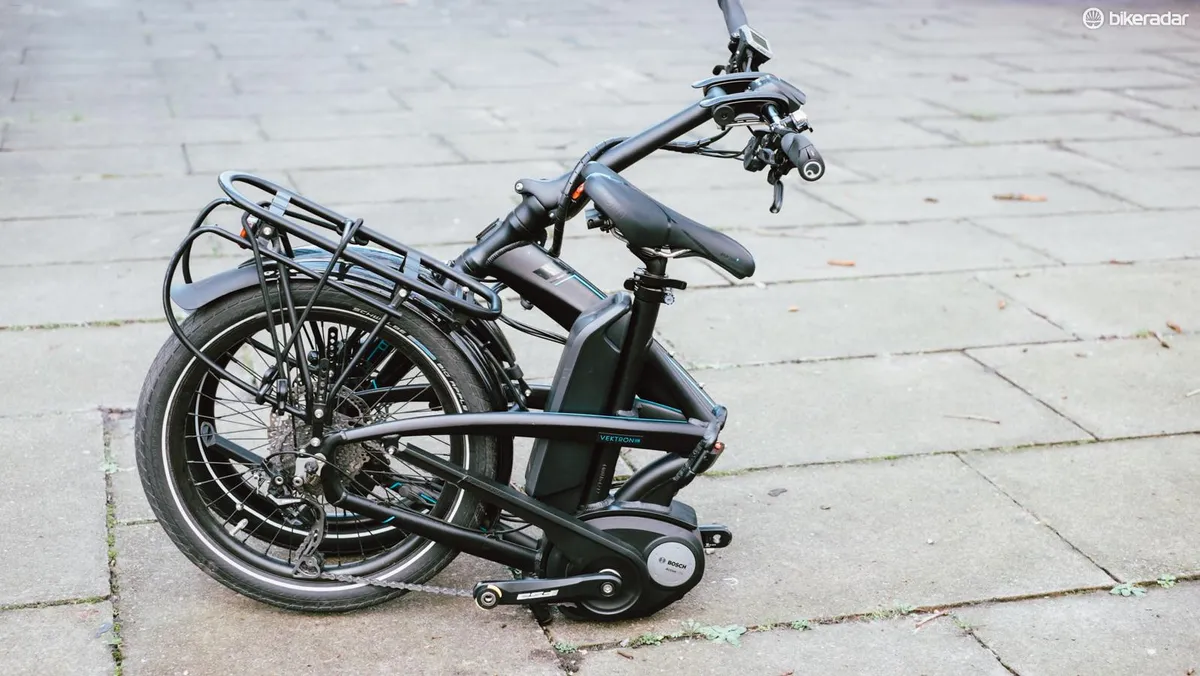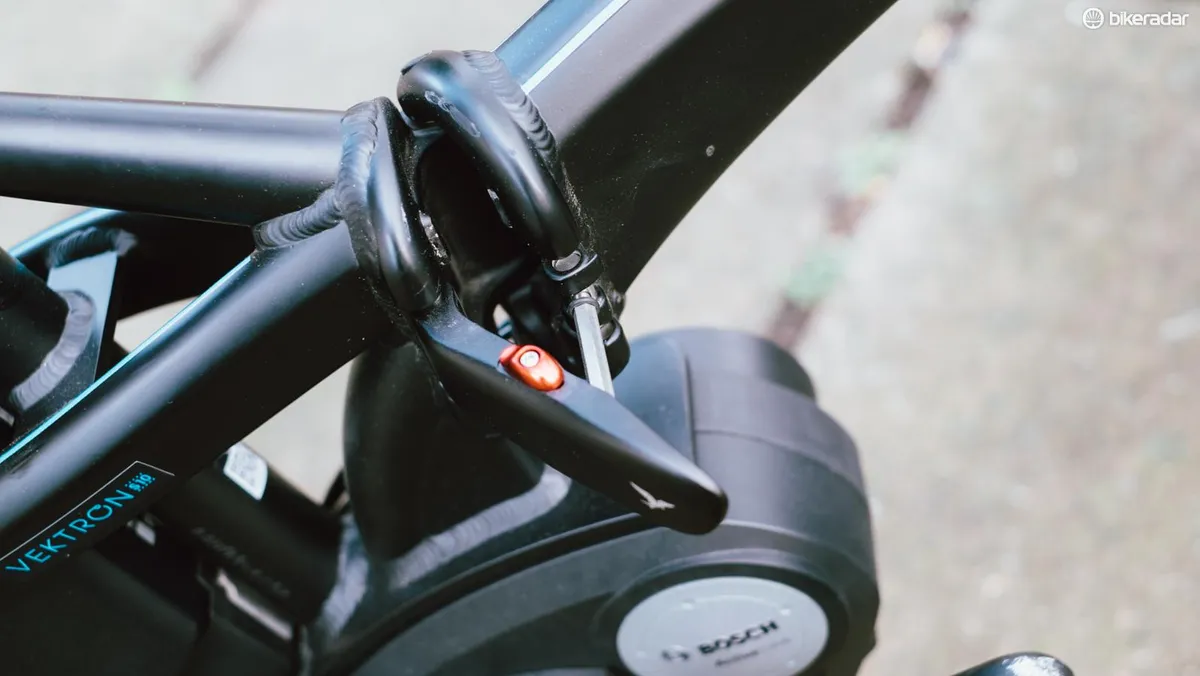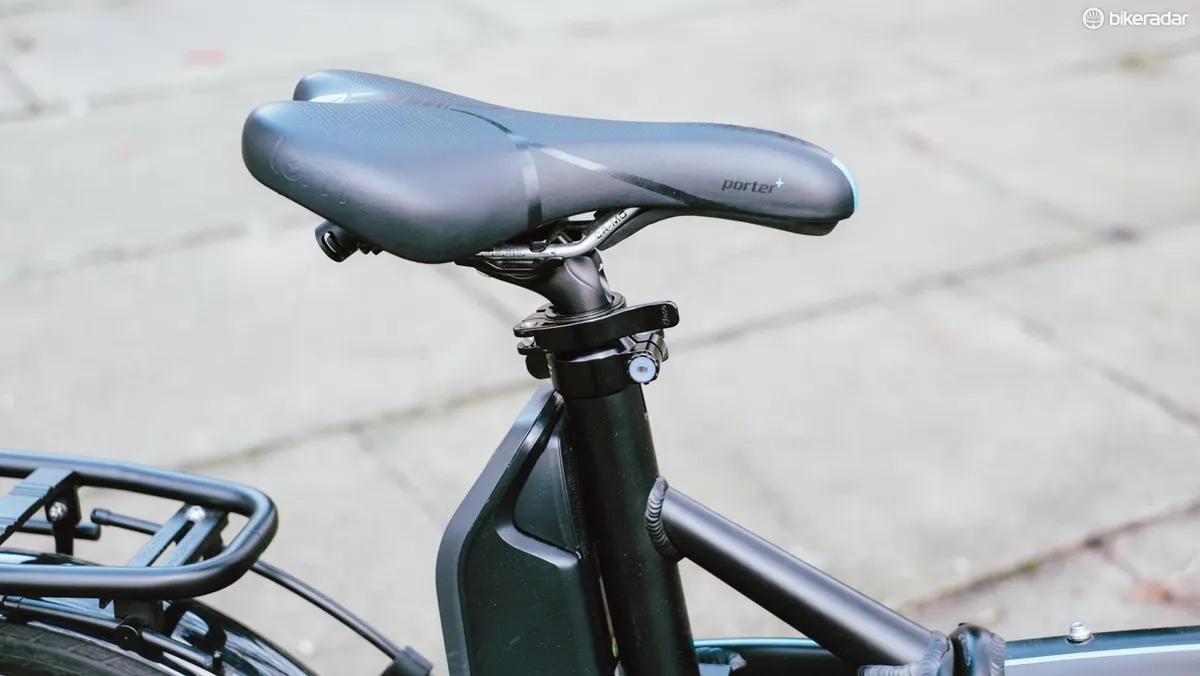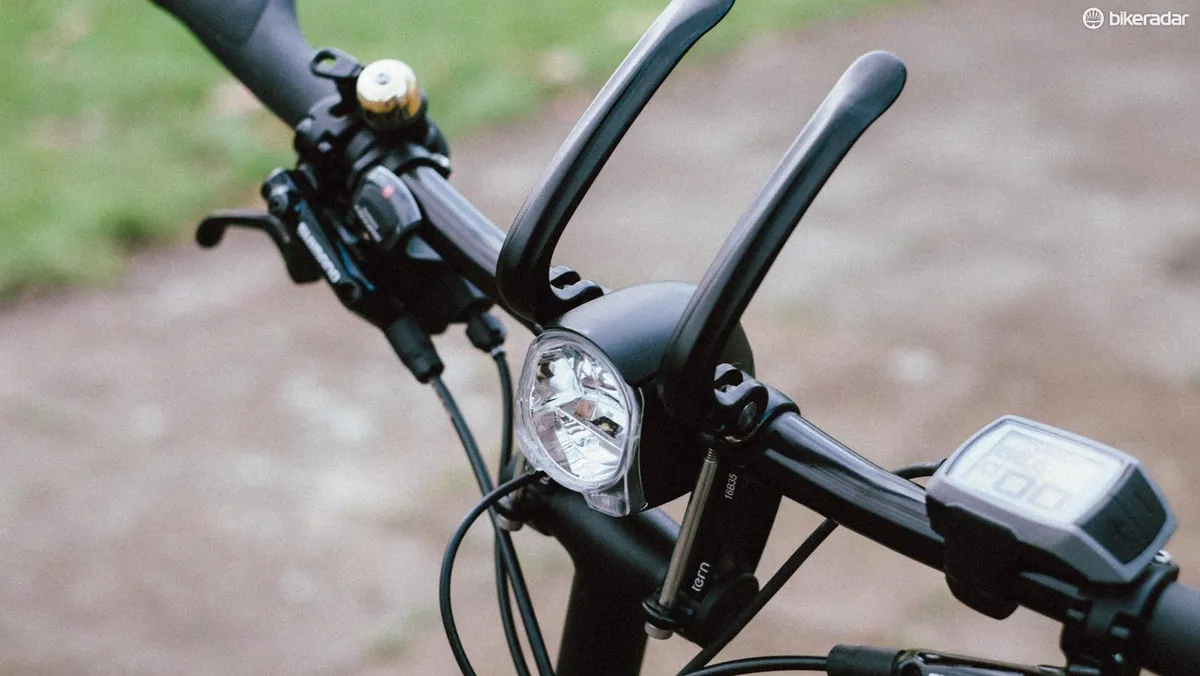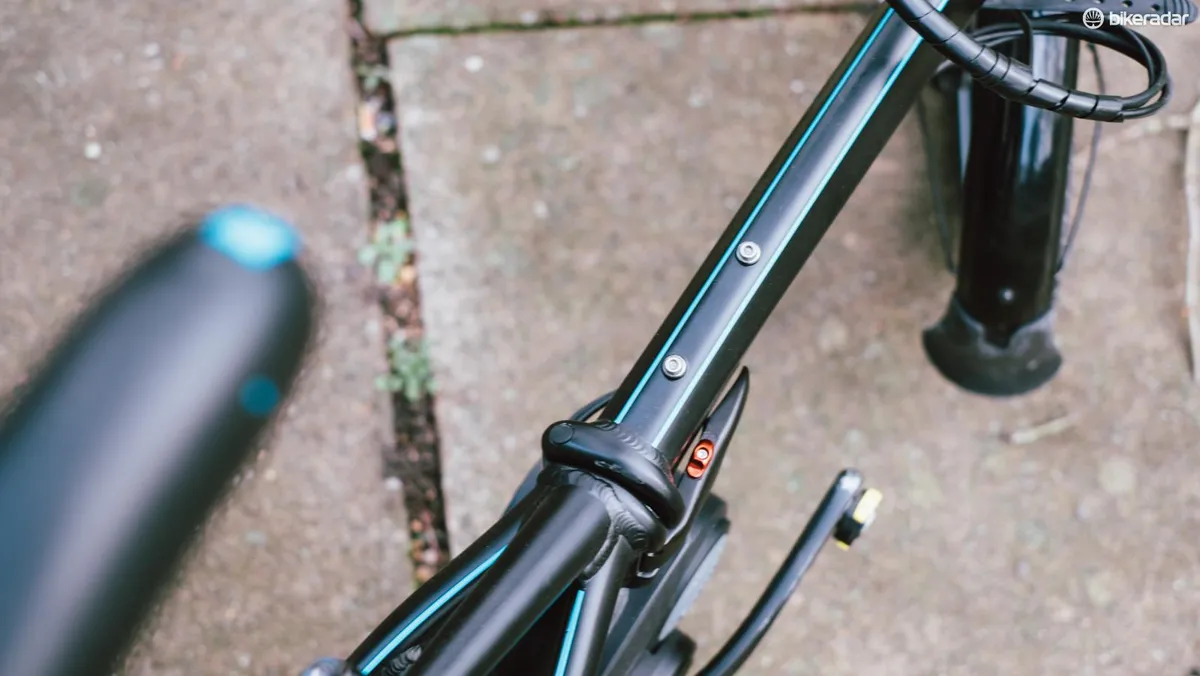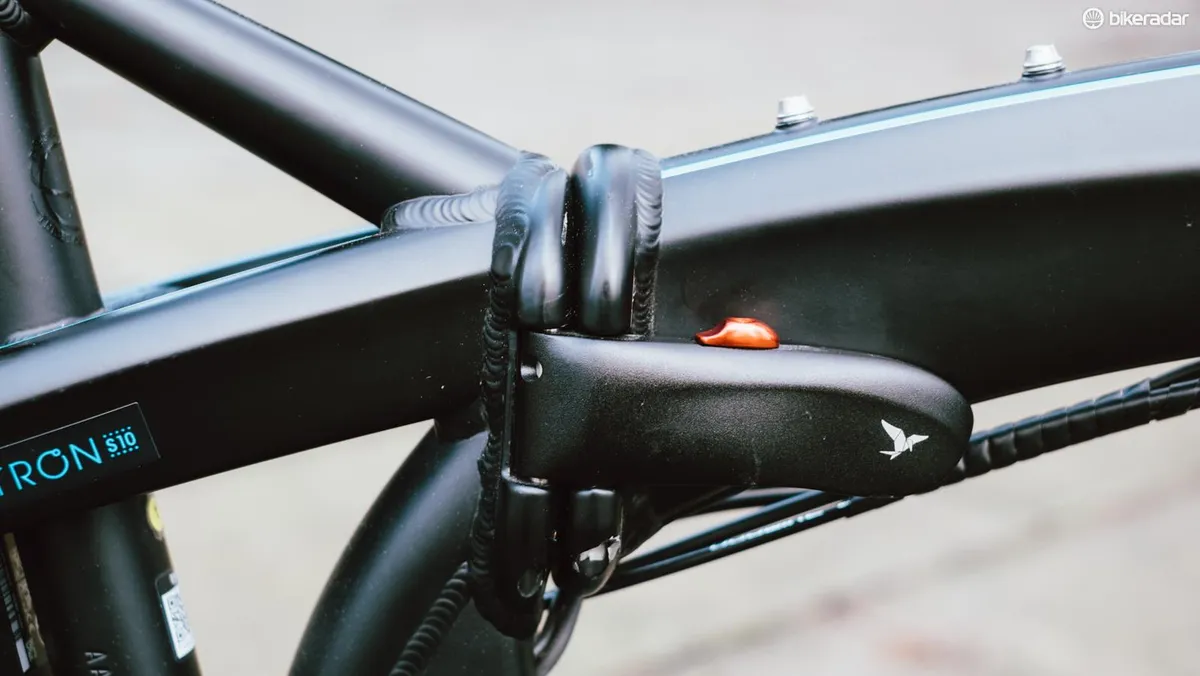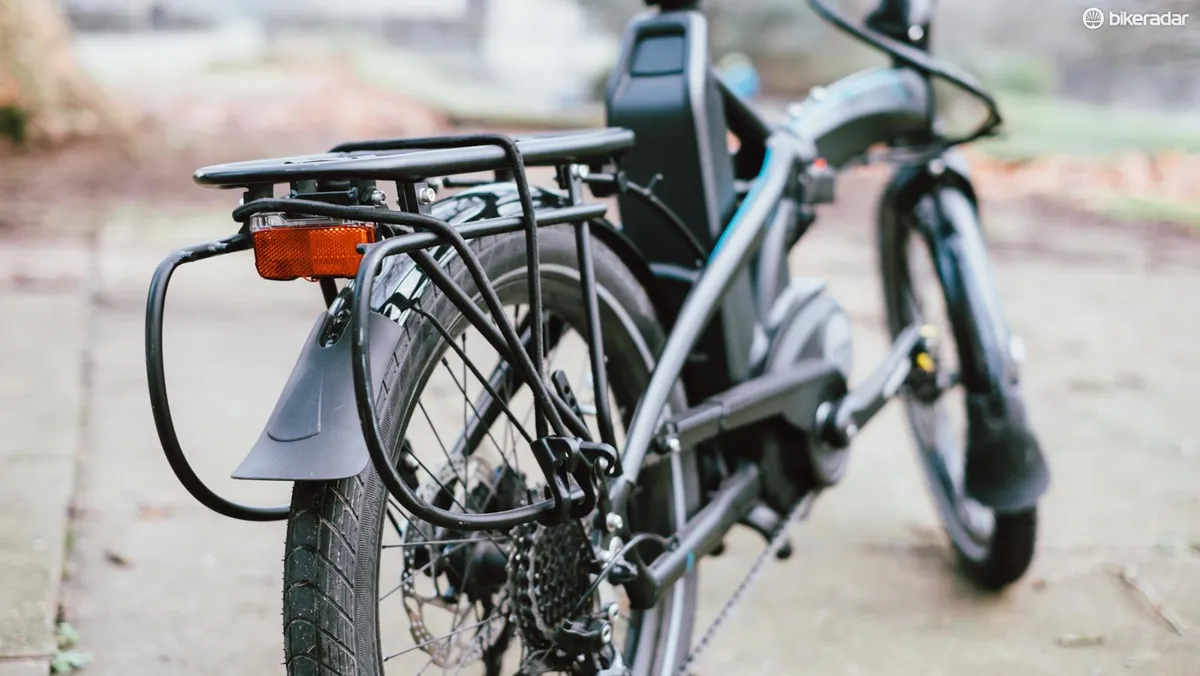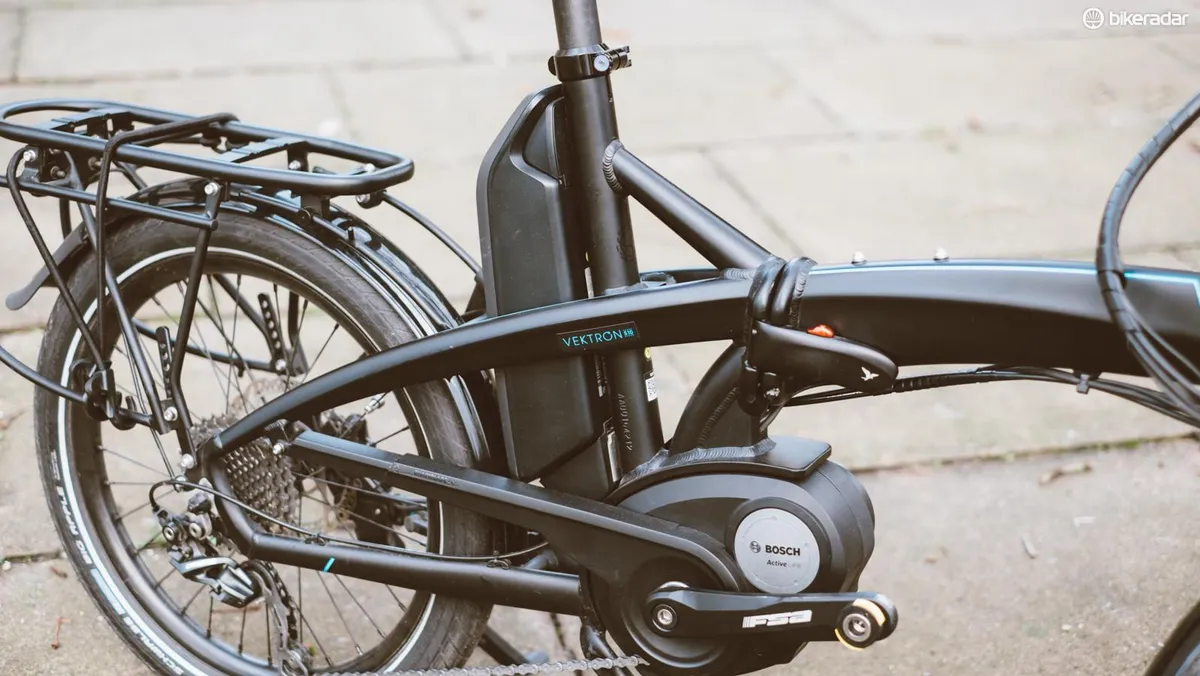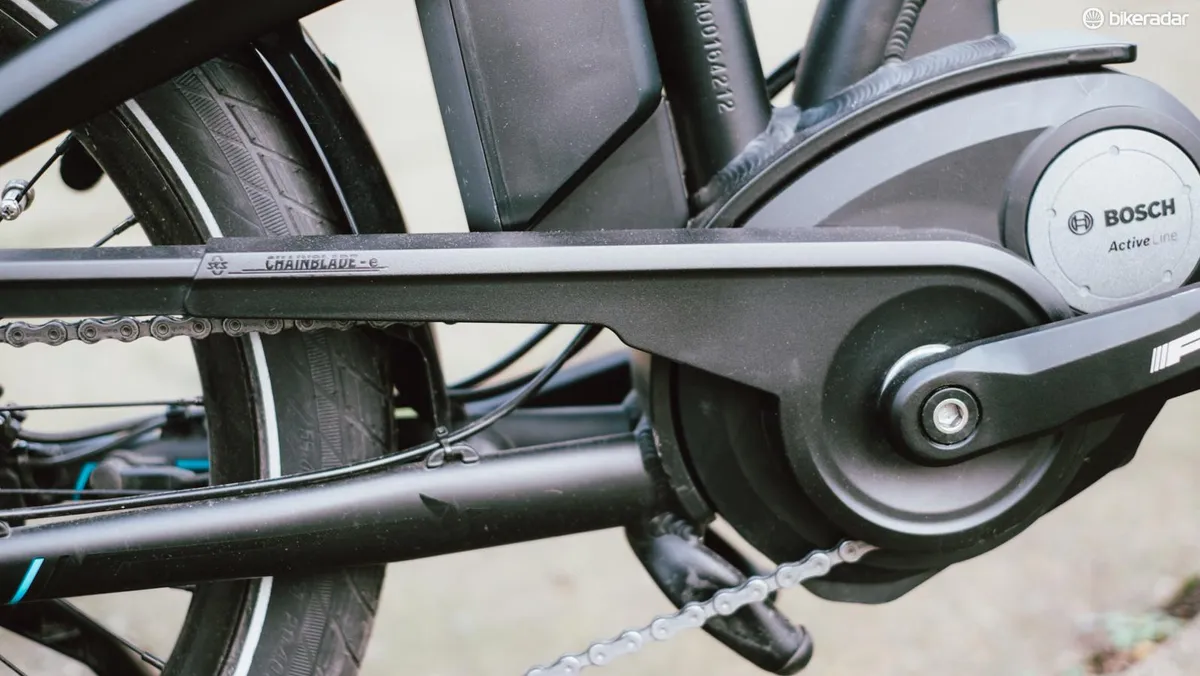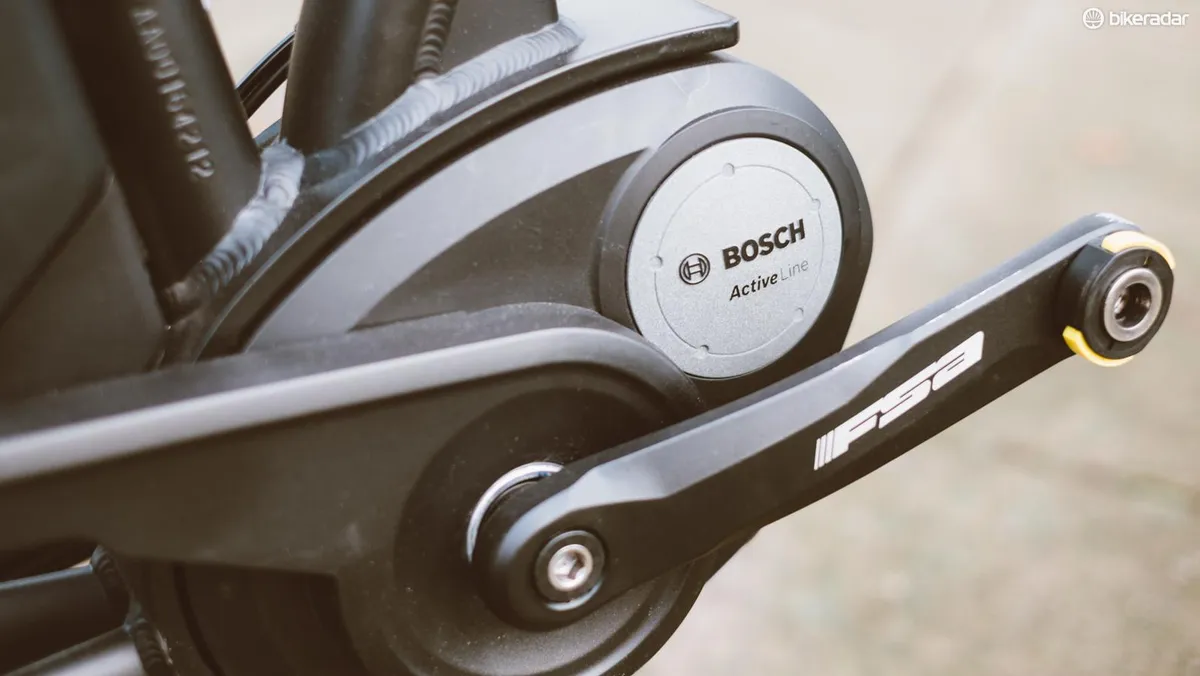Earlier this year, folding bike specialists Tern twinned up with Bosch to produce an electric folding bike for urban commuters. The idea, like so many before it, first debuted on Kickstarter and the resulting pledge ended up securing in excess of $92,000 from 89 keen backers.
- Best folding bike 2016: buyer’s guide and 9 of our recommendations
- Best electric bike: how to choose the right one for you
- Brompton S2L review
The first production bikes are expected to land with those early backers in February of next year but in the meantime we’ve got our grubby mitts on one, so here’s the lowdown on this £2,900 / $3,100 pedal-assist folder from Taiwan.
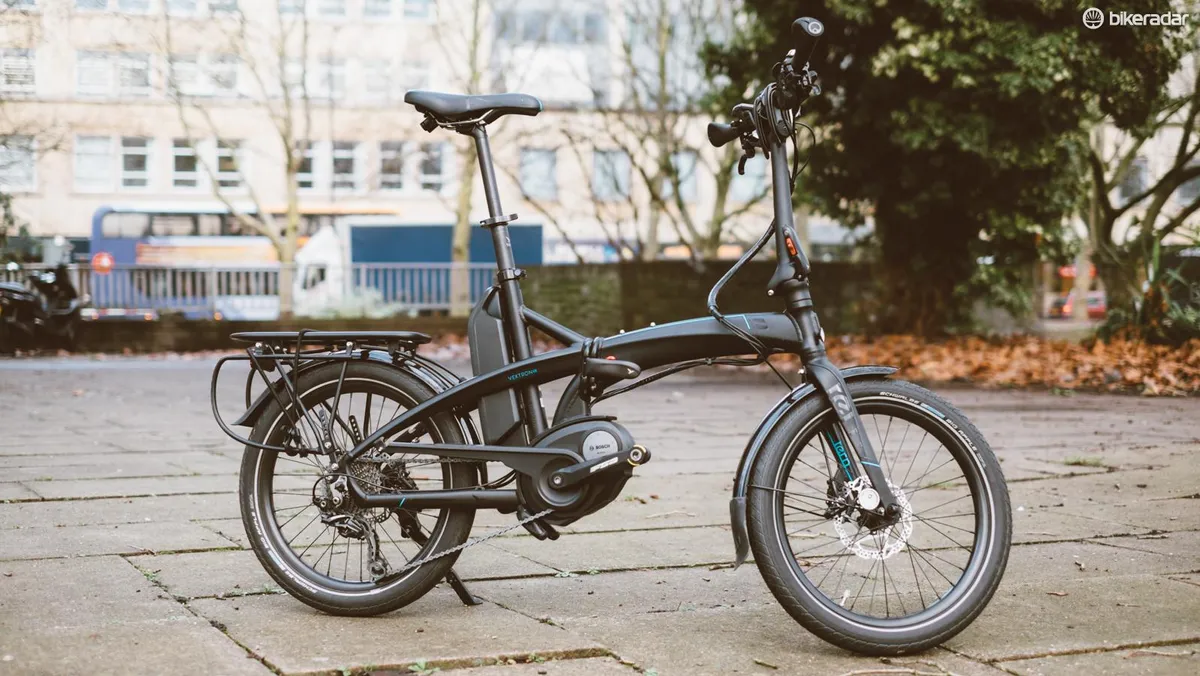
The Vektron was introduced to resolve what Tern considered to be three critical shortcomings of most electric bikes: portability, storage and security. Let’s start with the first point – portability – and it’s one that Tern knows well, being one of the world’s largest manufacturers of folding bicycles.
Like the company’s popular Verge and Link line of folding bikes, the Vektron uses 20in wheels and an alloy frame with a hinged centre section. Another similarity to its non-motorised siblings is that the Vektron is easy and relatively quick to fold/unfold. It has to be said that anyone expecting a Brompton-esque folded footprint will be disappointed, though what Tern has achieved is undoubtedly impressive here.
Once folded, the Vektron can be pushed via its saddle in a similar way to a wheelie-bag, though it’s not a particularly elegant solution – particularly over rougher surfaces. Usefully, a couple of magnets and a rubber strap help prevent any unintentional unfolding moments. A quick-release mechanism on the pedal spindle allows for quick and easy removal of the bike’s driveside pedal, which can be stowed via a specific mount behind the saddle.
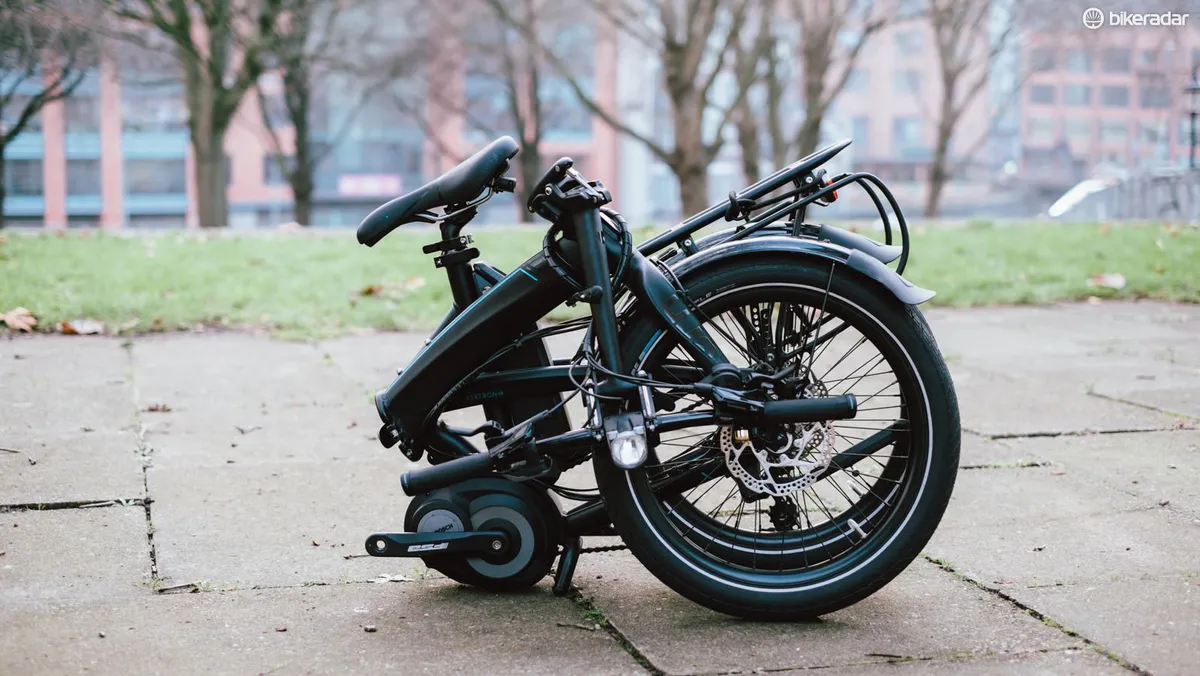
The additional heft of its motor and battery mean that the Vektron is no longer a bike that’s easily lifted (or carried). Our test bike tipped the scales at 21.76kg (47.97lbs) and so despite its small size this bike is properly e-bike heavy.
Below the frame’s hinge sits a Bosch ActiveLine motor which will deliver assistance up to 25km/h, or more like 32km/h for those lucky folk in the US. The power comes from a 300Wh cell mounted behind the frame’s seat post, which is claimed to go from flat to full power in 2.5-3.5 hours. Tern says riders can expect up to100km (62miles) from a complete charge. Controlling the motor’s power is Bosch’s Purion display unit. Mounted at the left-hand side of the handlebar, it can cycle through four levels of power assistance via two large buttons, while its backlit display holds a clear speedometer/tripometer and battery indicator. A walk-assist function is also supported.
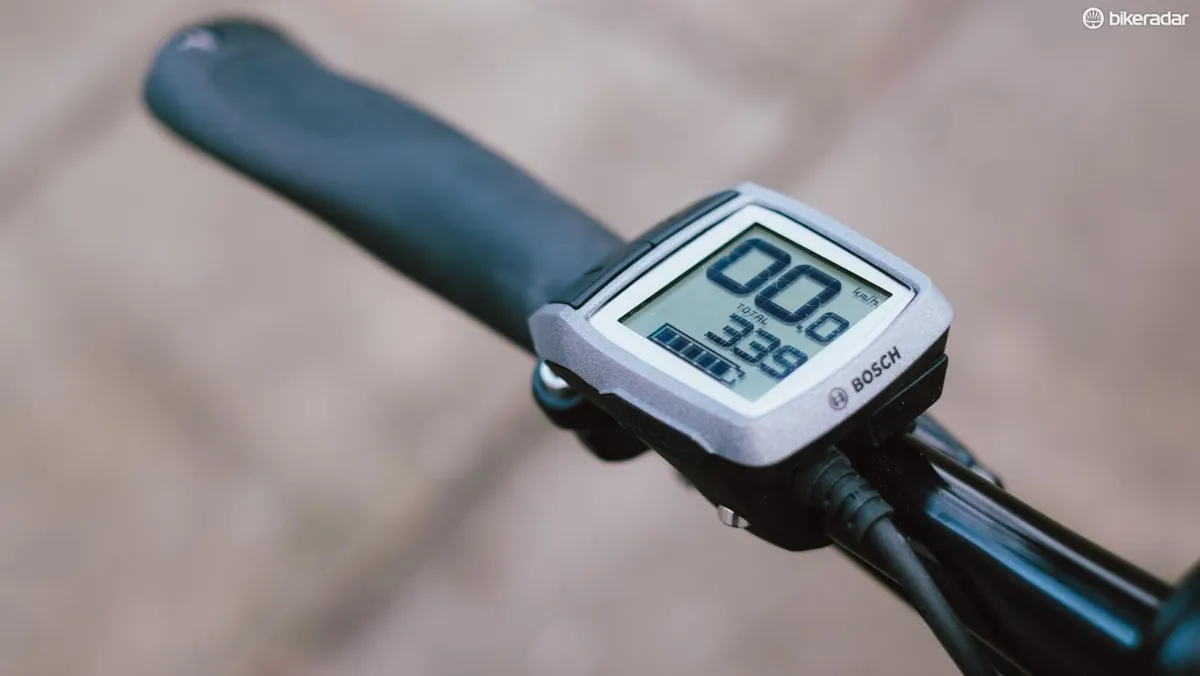
All power travels through a 1x10 Shimano Deore transmission, though its one fitted with an 11-34t cassette. Those who commute in casual dress will likely appreciate the concealed front chainring and extensive chain guard that comes as standard.
Despite being sold in one frame size, Tern insists the Vektron is suitable for a huge range of people (from 4ft 10in through to 6ft 5in) thanks to various adjustable components. The stem, for example, uses two quick-release clamps and allows a rider to swiftly and easily adjust the handlebar reach as well as the angle of the bars – no more faffing with allen keys to adjust the angles of levers etc. Similarly, the seat post sits within another larger post for extra extension over a one-piece arrangement.
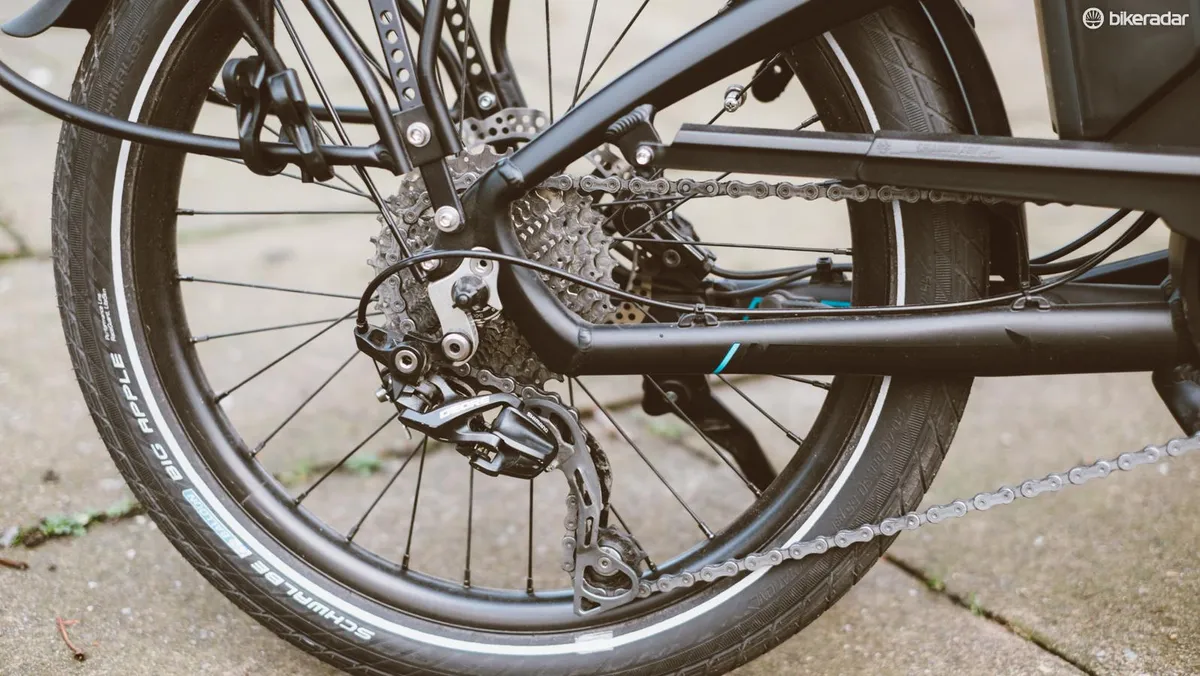
The disc-specific, 20in wheels of the Vektron are relatively wide and feature a high spoke count, while Schwalbe’s tough Big Apple tyres in 2.15in size have been chosen for their comfort and impressive resilience towards punctures. Stopping this bike will involve a lot of energy and so Shimano's hydraulic discs are a great choice.
The Vektron is also jam-packed with practical features including a rear cargo rack, a well-integrated front and rear light set and full-length mudguards. Behind the head tube badge are a couple of drillings that – once fitted with Tern’s own luggage truss – opens the front end of the bike up to a whole host of other luggage solutions. All in, the Vektor is rated to carry 105kg (230lb), including rider.
Pre-ride impressions?
We’ve yet to take the Vektron for a spin, and will update you as soon as we do, but for now here’s how things stack up on paper.
Arguably this bike’s biggest threat is the Gocycle G3. As its name suggests, the Gocycle is the third iteration of Gocycle’s futuristic looking collapsible bike. The Gocycle boasts a claimed range of 50 miles and a significantly lighter overall weight at 16.3kg (36lbs). It is more expensive though, retailing at £3,299, and its makers say it's not really a folding bike – it can be made stowable and become extremely compact, but is not a bicycle that you should fold up on a station platform or when you arrive at work.
p.p1 {margin: 0.0px 0.0px 0.0px 0.0px; font: 16.0px Helvetica; color: #666666; -webkit-text-stroke: #666666} span.s1 {font-kerning: none} span.s2 {font-kerning: none; background-color: #fffb01}
For a long time now, Brompton has been making a lot of noise about a motorised version of its classic folder, but we’ve yet to see anything that can rival this bike from the company themselves. That’s not stopped other firms from getting in on the motorised folding action though, and several companies out there will already sell you an electrified version of a Brompton or similar folder. Just take a look at the Nano 2 from UK company Nano Electric Bikes, available as a kit (from £710) or on a complete new Brompton (from £1,900). It offers a claimed range of up to 40 miles and adds just 4kg to a Brompton.
